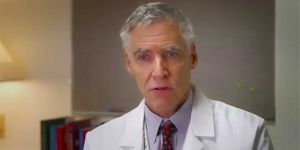
To turn the tide, nearly two million children took part in a double-blind study for the polio vaccine
On the recent anniversary of the birth of Dr. Jonas Salk-a century ago-his vigorous efforts to create and fine-tune a vaccine against polio 60 years ago were given fresh focus in contrast with how things work today.
"All Things Considered," an NPR broadcast, recently tapped the brain of David Oshinsky, PhD, looking back at the historic polio vaccination trials. Oshinsky, a distinguished writer and historian, won the Pulitzer Prize in History and the Hoover Presidential Book Award for his 2005 book, "Polio: An American Story." Oshinsky's research into the history of polio also nabbed him the 2010 Cartwright Prize from Columbia University Medical Center. Host Robert Siegel notes Salk was a researcher who dedicated his life to developing a vaccine against the scourge of polio.
Some back story: poliomyelitis (polio), a potentially deadly infectious disease caused by the poliovirus, can infiltrate an infected person's brain and spinal cord, causing paralysis, according to the Centers for Disease Control and Prevention. For its sheer fear quotient, polio then was like Ebola today. In the pre-polio vaccine 1950s, outbreaks of the disease in the United States caused more than 15,000 cases of paralysis each year. People infected with the highly contagious disease who don't have symptoms can still pass the virus to others and make them sick, an eerie prospect during long summers in which children freely romped.
Salk and his team at the University of Pittsburgh developed the first effective polio vaccine in 1952, and by 1954, the time had come to test it nationwide.
Protocols for a national vaccine trial at that time stand in stark contrast to governmental oversight today. Oshinsky says all that was needed for a child to be allowed to participate in the national vaccine trial was his or her parent's signature on a consent form. At that dire time, parents of more than 1.8 million school-age children across the United States readily signed. No chance of a repeat of anything like that today, he notes, especially with the anti-vaccine movement under way.
But at that time, it was impossible to escape the ravages of polio, Oshinsky notes, with the sight of children strapped with leg braces, in wheelchairs, and in iron lungs (a body-size artificial respiration machine). And children died of the disease.
There was immense buy-in from parents, anxious to shield their children from this grave foe. In the double-blind study, participants knew not whether the child received the vaccine or a placebo. The shot was later given to children who had received the placebo.
Polio has now been eradicated in the United States for about three decades. But in the scientific community, Salk did not command the same respect as Albert Sabin, who developed the second polio vaccine sanctioned for use in the United States, an oral polio vaccine, made with a live, attenuated version of the poliovirus.
Salk was "blackballed" by the virology community, and never inducted into the National Academy of Sciences. Oshinsky calls this omission scandalous.
Oshinsky fascinatingly speculates on why this may be so. No spoiler here; check out the story on NPR: n.pr/1tlZ1F7
 To turn the tide, nearly two million children took part in a double-blind study for the polio vaccine
To turn the tide, nearly two million children took part in a double-blind study for the polio vaccine








